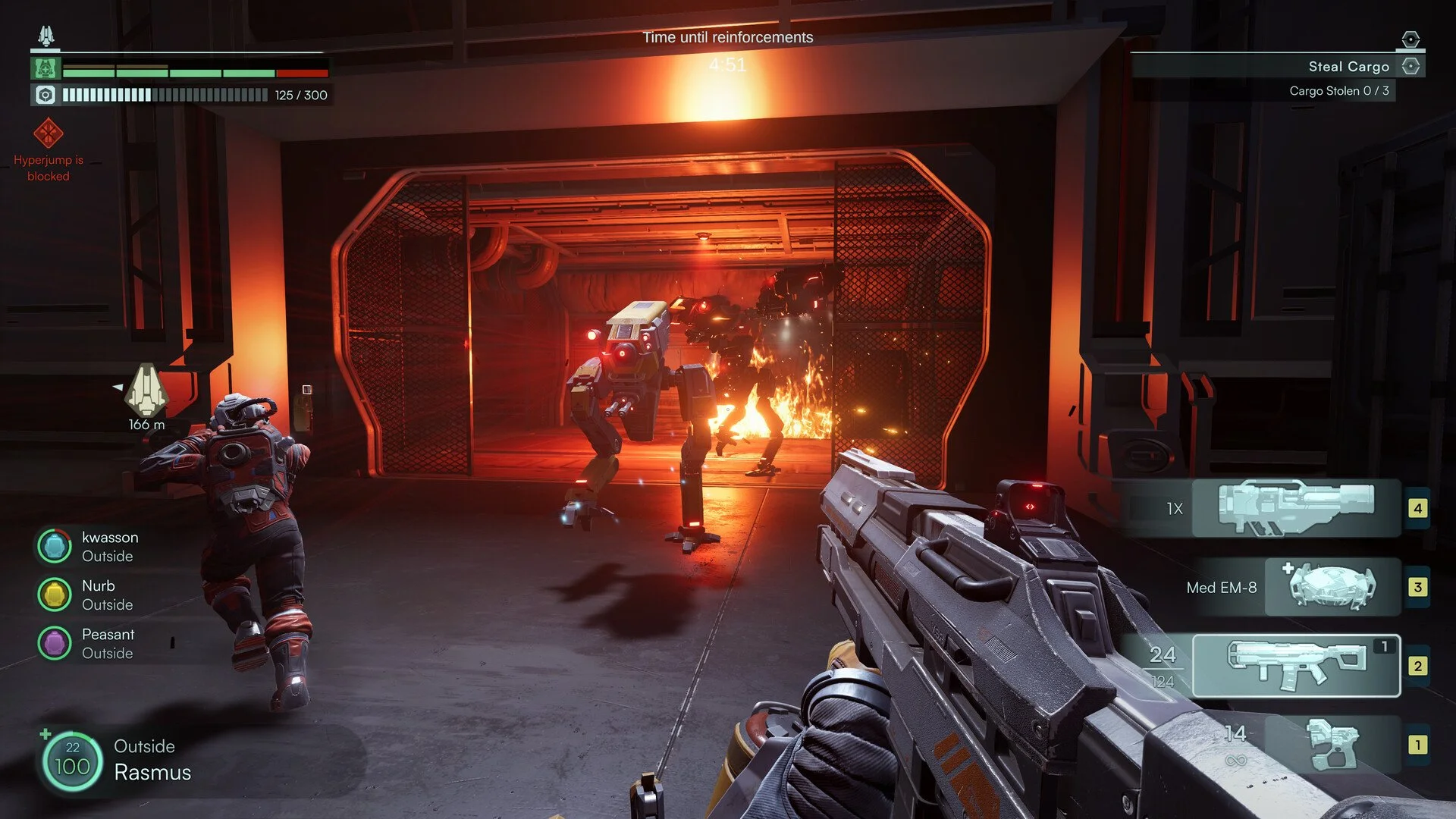Jump Space Missions Guide
Jump Space missions are the heart of the game but figuring out how they actually work can feel overwhelming at first. Every run mixes space combat, on-foot exploration, and survival events into one long gauntlet. If you want to make progress and keep your ship from burning up, you need to understand how missions play out from start to finish.
How Missions Work in Jump Space
Missions in Jump Space follow a clear loop. You prep your ship in the hangar, pick a mission from the galaxy map, then jump through sectors filled with challenges. Each jump brings choices, risks, and rewards that shape your run.
The goal is to complete objectives, survive hazards, loot resources, and make it back alive. Your loot converts into credits and permanent upgrades, while artifacts and consumables reset after the mission ends.
The Mission Loop
The loop is simple but demanding. You start in the hangar, customize your ship, and choose a mission path. Each sector has new encounters: enemy ships, environmental threats, or opportunities for loot.
Once inside a mission, the action never stops. You’ll need to keep your ship alive, complete objectives, and decide when to push deeper or retreat. Success means credits and progression. Failure means starting fresh.
Core Roles During Missions
There are no fixed classes, but players naturally fall into roles.
Pilot
The pilot steers the ship, dodges hazards, and controls forward weapons. Quick movement keeps the crew alive.
Engineer
The engineer manages power grids, repairs systems, and puts out fires. They also craft ammo and handle crises like leaks or radiation.
Gunner
The gunner hops into turrets and fights off enemy ships or swarms of drones. Strong aim and quick reaction time make this role shine.
Emergencies and Ship Management
Ship systems constantly fail during missions. Fires, hull breaches, and leaks are common. Fires need extinguishers, hull breaches require patches, and hazardous materials must be vented out the nearest airlock.
Coordination is key. If the crew panics, the ship will collapse.
On-Foot Combat and EVA
Missions are not just ship battles. You’ll exit into zero gravity with a jetpack and grapple hook to repair hull damage, disarm mines, or board enemy ships. EVA is risky but often the fastest way to complete objectives.
On-foot combat sections turn the game into a full shooter. You’ll clear enemy bases, sabotage systems, or steal resources before returning to your ship.
Loot, Credits, and Artifacts
Loot fuels progression. Resources and ship parts convert into credits once you return. Credits buy permanent upgrades like stronger turrets, hull plating, or new modules.
Artifacts are powerful but temporary. They only last for the run and must be slotted into your artifact cabinet before jumping sectors. If you forget, they disappear.
Solo Missions
Missions are designed for co-op, but you can play alone. Solo players get a Buddy Bot to help with reloading and basic combat. However, it cannot repair, vent, or handle crises. Solo runs demand fast kills and careful resource use.
Final Blurb
Missions in Jump Space are the backbone of the game’s roguelite design. Each run tests your ability to manage chaos, adapt to emergencies, and push for bigger rewards without losing it all. Whether piloting, repairing, or fighting, missions demand full focus and teamwork. Master the loop, and every return to the hangar will feel like progress.
FAQ
How many missions are in Jump Space?
There are nine mission types spread across dozens of sectors, with more coming in updates.
Do you keep loot after missions?
Permanent resources and credits carry over, but artifacts, consumables, and most weapons reset at the end of a run.
Can missions be done solo?
Yes, but solo runs are much harder. You get a Buddy Bot, but it can’t handle ship management tasks.
Are missions randomized?
Each mission mixes handcrafted objectives with random events and hazards, so no two runs play the same.







